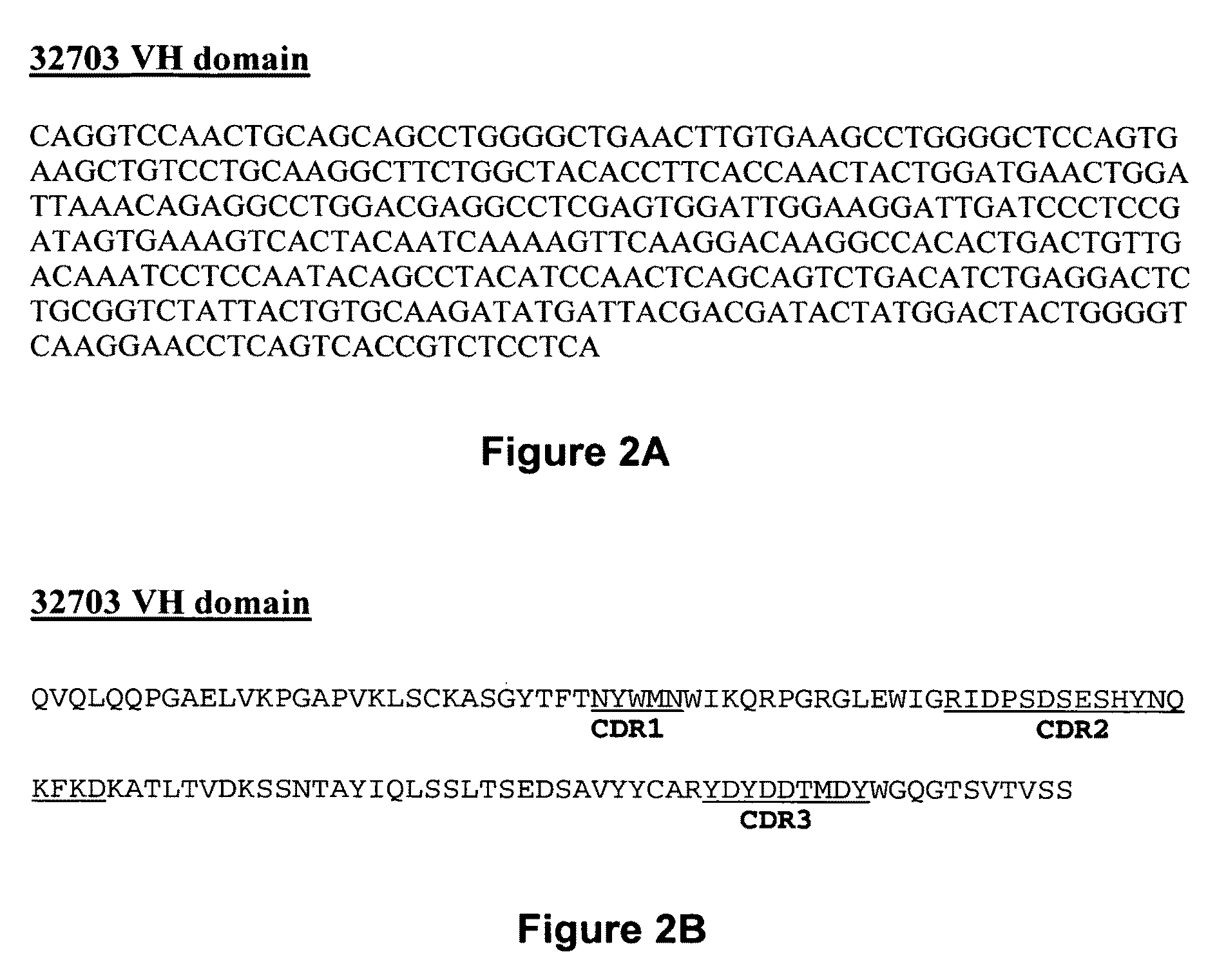IL3R.alpha. antibody conjugates and uses thereof
a technology of il3 receptor and antibody conjugates, applied in the field of il3 receptor alpha subunit alpha (il3r)expressing cell population, can solve the problems of limited overall survival benefit of chemotherapy, radiation and other modalities including newer targeted therapies, exert toxic effects on cancer cells, and chemotherapeutic agents are notoriously toxic, so as to improve the prophylactic effect of another therapy, improve the effect of one or more symptoms of cancer, and reduce the severity and duration of cancer
- Summary
- Abstract
- Description
- Claims
- Application Information
AI Technical Summary
Benefits of technology
Problems solved by technology
Method used
Image
Examples
Embodiment Construction
[0096]The present invention provides pharmaceutical compositions comprising an antibody that binds to the IL3Rα chain (preferably, the human IL3Rα chain), and a pharmaceutically acceptable carrier or excipient. In one aspect, the invention provides pharmaceutical compositions comprising an antibody that binds to the IL3Rα chain in an amount effective to reduce the quantity, number, amount or percentage of cancer stem cells and / or cancer cells in an animal with or animal model for myeloid leukemia or another cancer associated with IL3Rα-expressing cells by about 25%, about 30%, 35%, about 40%, about 45%, about 50%, about 65%, about 75% or more relative to a negative control. In a specific embodiment, the antibody incorporated into a pharmaceutical composition has a dissociation constant (Kd) of less than 4 nM on cells expressing the IL3Rα chain (e.g., erytholeukemic cells, myeloid cells or myeloblastic cells). In another embodiment, the antibody incorporated into a pharmaceutical com...
PUM
| Property | Measurement | Unit |
|---|---|---|
| imaging technique | aaaaa | aaaaa |
| radionuclide imaging | aaaaa | aaaaa |
| fluorescent imaging | aaaaa | aaaaa |
Abstract
Description
Claims
Application Information
 Login to View More
Login to View More - R&D
- Intellectual Property
- Life Sciences
- Materials
- Tech Scout
- Unparalleled Data Quality
- Higher Quality Content
- 60% Fewer Hallucinations
Browse by: Latest US Patents, China's latest patents, Technical Efficacy Thesaurus, Application Domain, Technology Topic, Popular Technical Reports.
© 2025 PatSnap. All rights reserved.Legal|Privacy policy|Modern Slavery Act Transparency Statement|Sitemap|About US| Contact US: help@patsnap.com



